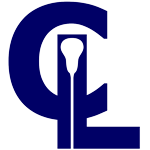Lawrence Technological University
Profile
Size
4 / 10Cost
10 / 10Selectivity
2 / 10-
Team Conference
Wolver. Hoosier (WHAC)
-
College Type
4-year, Private non-profit
-
Campus Type

City: Small
Student Body
Gender
- Male
- Female
Enrollment
- Full Time
- Part Time
Geography
- In-State
- Out-of-state
- Foreign
- Other
Ethnicity
- White
- Black
- Asian
- Latino
- Foreign
- Other
Other includes American Indian, Native Alaskan, Native Hawaiian or other Pacific Islander, two or more races and unknown race / ethnicity.
Team Road Trips
Other than trips to Indiana and Ohio to take on Indiana Tech and Lourdes University, the team spends most road trips in Michigan to play Siena Heights University, Unviersity of Michigan-Dearborn, and Aquinas College.
Recruit Commits
2019 | |||
Hometown |
Position(s) | ||
| Jake Kidd | Honeoye Falls, NY | Def, LSM | |
2017 | |||
Hometown |
Position(s) | ||
| Joel Smith | Romeo, MI | Def, LSM | |
| Joel Smith | Romeo, MI | Def, LSM | |
| Andrew Spisz | Hartland, MI | Att | |
| Dylan Couture | Hartland, MI | Def | |
| Brendan Mullins | Royal Oak, MI | Mid | |
| Justin Light | Howell, MI | Mid | |
| Ethan Harrington | Shelby Township, MI | Def | |
| Frank Young | Macomb, MI | Def | |
| Joel Trent | South Lyon, MI | Goal | |
| Aidan Nolan | Clarkston, MI | Att | |
2016 | |||
Hometown |
Position(s) | ||
| Evan Voglewede |

|
North Chili, NY | Def, LSM |
Location
Team Videos
Where Grads Live
- Greater Detroit Area
- Canada
- Greater Grand Rapids Michigan Area
- Greater Chicago Area
- Saginaw Michigan Area
- Ontario Canada
- Lansing Michigan Area
- San Francisco Bay Area
- Phoenix Arizona Area
- Greater Los Angeles Area
- Greater New York City Area
- Greater Atlanta Area
- Washington D.C. Metro Area
- Dallas/Fort Worth Area
- Toronto Canada Area
Where Grads Work
- Ford Motor Company
- Chrysler Group LLC
- General Motors
- DTE Energy
- Hewlett-Packard
- TRW
- US Army
- Johnson Controls
- Continental
- Lear Corporation
- Bosch North America
- Blue Cross Blue Shield of Michigan
- Yazaki North America
- Visteon Corporation
- Nissan Motor Corporation
What Grads Do
- Engineering
- Program and Project Management
- Operations
- Information Technology
- Sales
- Entrepreneurship
- Arts and Design
- Support
- Education
- Quality Assurance
- Consulting
- Finance
- Business Development
- Research
- Marketing
Niche Grades
Overall Experience

Student Life

Professor Rating

Academics

Athletics

Campus

Academics
Test Scores
This range represents the middle half of incoming freshman from the 25th to 75th percentile. The writing component is now optional and no longer reported. Historical writing ranges: 450 - 580 for SAT
This distribution represents incoming freshman test scores and GPA on 4.0 scale.
Admissions
Total |
Male | Female | |
| Applicants | 2,398 | 1,667 | 731 |
| % Admitted | 79% | 80% | 78% |
| % Admits That Enroll | 19% | 19% | 18% |
| Incoming Freshman Average GPA | 3.5 |
Admission Considerations
Required | Rec. | |
|---|---|---|
| High School GPA | ||
| High School Rank | ||
| High School Transcript | ||
| College Prep Classes | ||
| Recommendations | ||
| Demonstrate Competencies | ||
| Admission Test Scores | ||
| Other Tests (Wonderlic, etc.) | ||
| TOEFL (English proficiency) |
 Admissions office
Admissions office
Majors / Programs
Degrees offered by popularity. Type = Bachelor.
 Athlete graduation rate
Athlete graduation rate
Financial
Net Price
Average net price = sticker price - financial aid.
$32,406
Average net price by income for incoming freshman receiving financial aid.
Net price for all students (private non-profit and for profit institutions).
Sticker Price
Sticker price = estimated total cost of attendance.
Undergraduate | ||
On Campus | ||
| Tuition & Fees | $35,280 | |
| Books & Supplies | $1,536 | |
| Cost of Living | $10,540 | |
| Personal Expenses | $4,490 | |
| Sticker Price | $51,846 | |
Personal expenses includes laundry, transportation, entertainment and furnishings.
Financial Aid
98% of full-time, incoming freshman receive financial aid.
Receiving Aid % | Avg. Aid Amount | |
Type of Aid | ||
| Grant or Scholarship | 95% | $15,257 |
| Federal Grants | 29% | $4,719 |
| Pell Grants | 29% | $4,404 |
| Other Federal | 10% | $895 |
| State & Local Grants | 40% | $2,553 |
| Institutional Grants | 86% | $14,095 |
| Student Loans | 68% | $10,877 |
| Federal Loans | 66% | $5,530 |
| Other Loans | 20% | $18,839 |
All financials shown for full-time, incoming freshman.
Total Amount | Per Student | |
Endowment | ||
| Financial Assets | $50.4 Million | $17,276 |
Value of endowment assets at fiscal year end.
Debt
Total federal debt after graduation for undergrad borrowers: $27,000.
Total cumulative student debt by percentile.
Total Principal | Monthly Payment | |
| 10 Year Repayment | $19,993 | $287 |
Most student loans have a grace period before repayment begins.
3 Year Avg. Default Rate: 5.7%
Avg. rate for colleges with lacrosse is 5.1%.
Total federal debt excludes private student loans and parent PLUS loans. Cumulative debt cohort includes 808 students.
Salary
Earnings 10 years after enrollment: $55,300
Earnings of former students working by percentile.
Earnings of former students who received federal financial aid. Figures shown are median.
Payback
How long until this college investment pays off: 5.15 years.
Median debt and foregone earnings divided by median earnings. Foregone earnings assumes 4 years to graduation; at this school, 22% of students graduate on time.
Team Social
Campus Safety
On Campus |
In Res. Halls |
|
|---|---|---|
Criminal Offenses |
||
| Murder | - | - |
| Negligent Manslaughter | - | - |
| Rape | - | - |
| Fondling | - | - |
| Incest | - | - |
| Statutory Rape | - | - |
| Robbery | - | - |
| Aggravated Assault | - | - |
| Burglary | 2 | 1 |
| Motor Vehicle Theft | 3 | 2 |
| Arson | - | - |
In Residence Halls are a subset of On Campus statistics. Murder includes non-negligent manslaughter.
The crime data reported by the institutions have not been subjected to independent verification by the U.S. Department of Education. Therefore, the Department cannot vouch for the accuracy of the data reported here. Statistics represent 3-year average data.
Data from The National Center for Education Statistics (NCES), the primary federal entity for collecting and analyzing data related to education.
Carnegie Classifications
Category |
Classification |
|---|---|
| Basic Classification | Master's Colleges & Universities: Larger Programs |
| Undergrad Instruction | Professions focus, some graduate coexistence |
| Graduate Instruction | Research Doctoral: STEM-dominant |
| Enrollment Profile | High undergraduate |
| Undergrad Profile | Four-year, medium full-time , selective, higher transfer-in |
| Size and Setting | Four-year, small, primarily residential |
Carnegie classifications provide a framework for evaluating comparable schools.
Similar Academic Schools
-

-

-

-

-

-

-

-

-

-

-

-

-

-

 See more college grades
See more college grades Free ACT and SAT test prep
Free ACT and SAT test prep Free SAT test prep
Free SAT test prep Free scholarship search
Free scholarship search